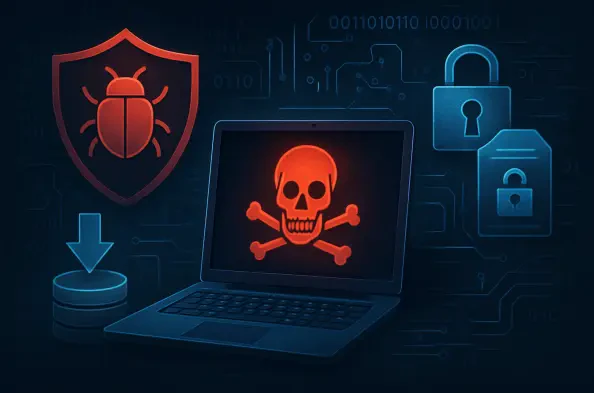In a startling turn of events that has sent shockwaves through the gaming community, a routine update for the popular 2D platformer-shooter game BlockBlasters, developed by Genesis Interactive, has been revealed as a carrier of dangerous malware, jeopardizing the privacy and security of countless players. Initially launched to critical acclaim on Steam, the game enjoyed a loyal following until a patch released late last summer turned trust into betrayal. Security researchers uncovered that this update, identified as Build 19799326, harbored malicious software designed to steal sensitive user data, ranging from login credentials to financial information. This incident not only exposed critical vulnerabilities in digital distribution platforms but also highlighted the growing threat of cybercriminals exploiting the gaming industry’s reliance on patches and updates. As a grim reminder of the hidden dangers lurking behind seemingly harmless downloads, the sophistication of the attack and its real-world impact demand a closer look at how such a breach occurred and what it means for gamers everywhere.
Unpacking the Malicious Update
The BlockBlasters patch, deployed to unsuspecting users, was far more than a simple game update; it was a meticulously crafted vehicle for a multi-stage malware attack. Security experts from a leading firm identified the core malicious component as a file named game2.bat, which initiated a complex operation using Windows commands to harvest critical data. This included IP locations, Steam login details such as SteamID and AccountName, and even information about installed antivirus software. The malware cleverly checked if only Windows Defender was active before unpacking additional payloads, ensuring it could operate under the radar. These payloads were then uploaded to a remote command-and-control (C2) server, allowing attackers to access the stolen information. Such tactics reveal a deep understanding of system vulnerabilities and user behavior, highlighting how cybercriminals exploit trust in legitimate updates to deploy their harmful code. The audacity of embedding such a threat in a popular game update underscores the growing boldness of these digital predators.
Beyond the initial data theft, the malware employed additional scripts and files to widen its destructive reach. Visual Basic scripts like launc#.vbs and test.vbs executed further batches targeting browser extensions and cryptocurrency wallet data, a prime target for info-stealing campaigns. Another file, dubbed 1.bat, manipulated Microsoft Defender settings to exclude the game’s directory from scans, ensuring uninterrupted malicious activity. Among the payloads were Client-built2.exe, a backdoor for persistent remote access, and Block1.exe, a variant of the StealC malware family. Written in C++, StealC focused on extracting browser data from popular platforms like Google Chrome and Microsoft Edge, using outdated encryption to mask its communications with a secondary C2 server. By running the actual game process alongside these operations, the malware effectively disguised its presence, leaving players unaware of the breach occurring in the background. This dual execution strategy exemplifies the sophisticated evasion techniques now common in such attacks.
Impact on the Gaming Community
The fallout from the infected BlockBlasters patch was immediate and severe, affecting a significant number of players who trusted the update process. Telemetry data suggested that over 100 users downloaded the compromised patch, with a small but consistent number actively playing during the early days of discovery. The personal impact became starkly evident when a streamer, broadcasting a charity livestream, inadvertently became infected, exposing the real-world consequences of such cyber threats. This incident wasn’t just a statistic; it represented a breach of trust that could lead to identity theft, financial loss, and emotional distress for affected individuals. Steam swiftly flagged BlockBlasters as suspicious and removed it from the platform, but the damage had already been done for many. This event serves as a sobering reminder that even trusted digital ecosystems can become conduits for malicious intent, leaving gamers vulnerable to unseen dangers in their favorite pastimes.
Compounding the issue is the broader pattern of similar incidents on digital platforms, where BlockBlasters is merely the latest in a string of malicious games. Previous titles have also been pulled from Steam for harboring threats, indicating a troubling trend of cybercriminals exploiting the inherent trust players place in these marketplaces. The targeting of sensitive data like cryptocurrency wallets poses an especially high risk, as financial losses can be immediate and irreversible. Security experts have urged affected players to uninstall the game, run comprehensive antivirus scans, and closely monitor their accounts for unusual activity. Beyond individual action, this breach raises critical questions about the vetting processes for game updates and the responsibility of platforms to protect users. As gaming continues to grow as a cultural and economic force, ensuring the safety of its community becomes paramount to maintaining confidence in digital distribution systems.
Lessons Learned and Future Safeguards
Reflecting on the BlockBlasters incident, it became evident that the gaming industry had been caught off guard by the audacity and technical prowess of cybercriminals. The malware’s ability to bypass standard security measures through modified antivirus settings and encrypted communications revealed significant gaps in existing defenses. This breach was not an isolated event but part of a larger wave of sophisticated attacks targeting gamers through trusted platforms. The response from Steam, while prompt in removing the game, highlighted the reactive nature of current security protocols, which often address threats only after they’ve caused harm. Industry analysts noted that the increasing complexity of these attacks demanded a shift toward proactive measures, including more rigorous update screening and real-time threat detection. The incident served as a wake-up call, pushing stakeholders to reconsider how trust in digital ecosystems had been exploited by malicious actors.
Looking ahead, actionable steps emerged as critical to preventing similar breaches in the future. Game developers and platform providers must invest in stronger vetting processes for updates, incorporating advanced malware detection tools before deployment. Collaboration with cybersecurity firms can help identify potential threats early, while educating players about safe downloading practices adds another layer of defense. Gamers are encouraged to remain vigilant, using robust antivirus software and avoiding updates from unverified sources. Additionally, platforms like Steam could implement stricter developer authentication and continuous monitoring systems to catch anomalies in real time. The BlockBlasters malware incident underscored the urgent need for a collective effort to fortify the gaming ecosystem against evolving cyber threats. By prioritizing security over convenience, the industry can rebuild trust and ensure that the joy of gaming isn’t overshadowed by the fear of digital deception.






